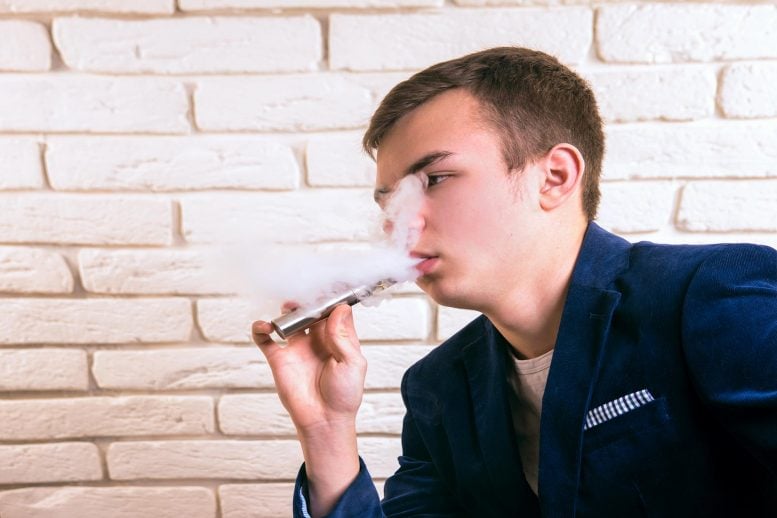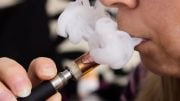
Vaping is the act of inhaling and exhaling the aerosol, often referred to as vapor, which is produced by an e-cigarette or similar device. The vapor contains a mixture of chemicals, including nicotine, flavorings, and other additives. Vaping was originally marketed as a safer alternative to smoking traditional cigarettes, as it does not produce smoke or ash. However, research has shown that vaping can have negative health effects, and it has been linked to lung injury and other respiratory issues.
On February 6, 2020, the U.S. Food and Drug Administration (FDA) implemented a ban on the sale of many flavored e-cigarettes, with some exceptions. However, a survey by researchers from the University of Rochester Medical Center (URMC) found that the ban did not lead to adults quitting e-cigarette use, and may have even driven some back to smoking traditional cigarettes. The researchers attribute this failure to policy loopholes that allowed for the continued use and accessibility of e-cigarettes.
Survey results, published in Tobacco Control, show that less than five percent of the 3,500 adult e-cig users who responded to the survey quit using e-cigs in response to the flavored e-cig ban. The rest of the respondents switched to other forms or flavors of e-cigs not covered by the ban or other types of tobacco products.
“An increasing body of literature shows that e-cig flavors themselves cause damage when inhaled, so it makes sense to ban flavors,” said Deborah J. Ossip, Ph.D., a tobacco research expert and professor in the Department of Public Health Sciences and Center for Community Health and Prevention at URMC who co-authored the study. “But the ban doesn’t appear to be working. People – including youth – can still get flavored products and are still using them.”
A large part of the problem, according to lead study author Dongmei Li, Ph.D., associate professor of Clinical and Translational Research, Obstetrics and Gynecology and Public Health Sciences at URMC, is that the ban didn’t cover newer products, like disposable e-cigs and e-cigs that use tanks rather than cartridges/pods.
“Other forms of flavored e-cigs, especially disposable e-cigs, have become very popular after the FDA policy,” Li said. “The FDA policy also did not ban menthol or tobacco flavored products – and our study shows many people switched to menthol flavored e-cigs after the ban. It seems many people find menthol to be a nice flavor.”
According to the study, nearly 30 percent of survey respondents switched to tank or disposable flavored e-cigs and another 30 percent switched to menthol or tobacco-flavored pods. Some people reported switching to traditional tobacco products: 14 percent switched to combustible products, like cigarettes, and five percent switched to smokeless tobacco (i.e. chew or dip). Less than five percent of respondents quit using e-cigs after the FDA ban.
Using statistical modeling, the study authors looked for factors associated with these e-cig use behavior changes. Using tank system e-cigs and disagreeing with the FDA flavor enforcement policy was most strongly associated with switching to other flavored e-cigs. Using mint-flavored e-cigs in the past 30 days was associated with switching to menthol-flavored e-cigs. And people who reported smoking every day or some days had a higher likelihood of switching to tobacco-flavored e-cigs or to combustible tobacco products.
On the other hand, people who used flavored e-cigs without nicotine had a higher likelihood of quitting e-cigs. Though the study was not designed to show causation, this association supports previous research that suggests lowering the amount of nicotine in cigarettes could help smokers quit. However, further research is needed to better understand the relationship between low-nicotine e-cig use and quitting vaping.
Moving forward, Li believes that the policy could be effective if it covered all flavored e-cigs (including menthol flavor and all e-cig types) and if there was active monitoring of the policy implementation and compliance. “Both are important in helping reduce the epidemic of e-cig use among young adults in the U.S.,” she said.
Reference: “Impact of the FDA flavour enforcement policy on flavoured electronic cigarette use behaviour changes” by Dongmei Li, Deborah J Ossip, Maansi Bansal-Travers and Zidian Xie, 3 November 2022, Tobacco Control.
DOI: 10.1136/tc-2022-057492
The study was funded by the National Cancer Institute, the Food and Drug Administration, and the National Center for Advancing Translational Sciences (NCATS).









Oh no, prohibition didn’t work? How incredibly unforeseeable and utterly unpredictable to anyone profoundly ignorant of 20th century history and current events and human nature.
“Moving forward, Li believes that the policy could be effective if it covered all flavored e-cigs”, yes! Prohibiting some of them didn’t work, so total prohibition must be the answer! What we need is a war on this concept, a sort of war on this drug. Maybe Ossip from the Community Health Prevention group and Li from Obstetrics And Gynecology would volunteer to run a ruthless Ministry Of Obedience for enforcement of their diktats regarding what we’re allowed to taste?
The study and this article fail to address that the policy itself failed on every level. You can still buy flavored vapes in every state/area that has them banned. Vapes with flavors are banned where I live, but I still get them and use them regularly. I’m actually about to head out right now to buy a new one. It’s incredibly hard to ban something. Smugglers, loopholes, the black market, and wholesalers still have ways of getting the product in and selling it. So this isn’t going to work in a million years. The gov could try to declare a war on vaping, but take a look at the war on drugs to see how that’s going to go for them. Just give up and let responsible adults have their silly little flavors. Don’t punish us because crap parents don’t know how to watch or protect their kids. And if it really is a health and safety issue, figure out a way to make it safer? Or tackle bigger health risks first? Oh right, because they already tried that and failed. The FDA and gov are so desperate for a win they’re turning over every rock they can find, but they need to realize they’re making a mess in the process.
A vote for liberal democrats is a vote for increased government regulation on everyone daily life.